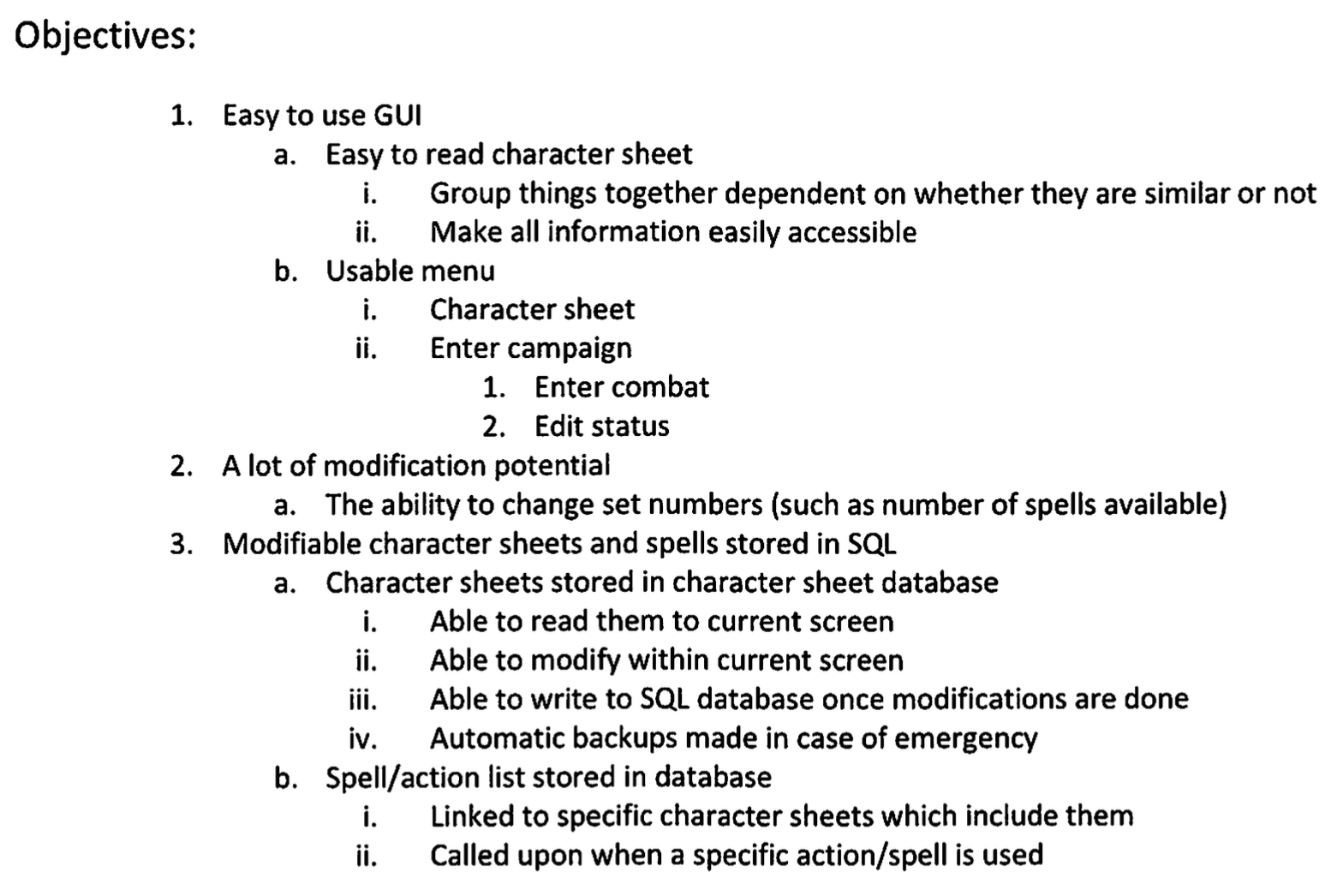When considering the NEA for marking there is a 'hurdle' that a project needs to get through and that is the 'A-level standard' test.
There are reasons why this was required for the specification but this is just a place to explain what it means, how you can detect it and how you can help students get past this hurdle.
In terms of marking:
- if a project is A-level standard we mark as normal
- if a project is determined to be not A-level standard
- mark the project
- then move the marks down TWO LEVELS for each of the documentation sections (analysis, design, testing, evaluation)
NOTE - if this means they go down to 'level 0' but have completed some work for that section they can gain 1 mark
The 'A-level standard' penalty can dramatically reduce the mark of a project.
How to detect A-level standard?
The means to detect A-level standard is through the analysis section - the idea being is that 'a student starts off on a project that is A-level' even if they end up not completing the implementation. Markers (and moderators) will be checking the analysis section to test whether a student is considering something of the right challenge - the easiest place to look is at the objectives but then also the scoping and research performed.
For most projects it is clear that the project is A-level (it is only a very small minority that now get caught out).
Consider a quizzing system. If the student is not careful and just describes a simple quizzing system (and does not explain the question types and how it will be answered) then they might have a problem. If a student discusses ideas that the quiz will 'adapt according to student performance' of that it will 'produce reports highlighting problem areas' or that it will 'allow for retrieval practice by showing previous wrongly answered questions interspersed with new questions' then the student is moving towards A-level ideas.
Two scenarios to consider:
Scenario 1
The student sets out to create a simplistic quizzing revision system. The analysis does not scope this out well and just talks about multiple choice questions. There is nothing in the analysis about storing results or reporting back to anybody. There is no indication that 'an admin can enter new questions' and it appears that the whole system might just be hard-coded rather than making use of any database.
The marker awards:
Analysis 5 (they did scope it out a bit, they interview a few students who responded with the need for a quiz, they set a few simplistic objectives, they also sketch out an initial idea as to what it might look like)
Design 7 (the student did make a good attempt at designing out what they would complete and talked about both data and algorithms - it ended up using text files to hold the quiz and they explained this well)
Skills 12 (it did work and it showed some basic A-level skills but was mainly GCSE coding)
Completeness 8 (it did what it set out to do - but when considering what might be expected for an A-level quiz it was placed into level 2)
Testing 6 (following advice they did complete video testing that showed their system working well)
Evaluation 3 (the student carefully evaluated there project and identified weaknesses and also managed to gain user feedback which was discussed)
TOTAL - 41 (however it is not A-level standard - gets moved down to 25)
Scenario 2
Same student but after submitting a project proposal they realise they should challenge themselves more in the analysis stage and come up with ideas around 'reporting to the student their progress across a term' and 'reporting to the teacher the progress of a class' and they begin to discuss a data model in their initial modelling which indicated a multi-table database.
Now accepted as A-level standard - and even though the student still completed the same implementation (as they struggled with the DB and went back to flat files) - so 24/42 they do not have their documentation mark changed and can take a mark in the 40s.
Here are objectives from one project:

Is it clear from these objectives that the project is 'A-level standard'?
How could the student improve these objectives (by adding in some 'pointers towards complexity') - however, at the same time, this 'storing of characters' did not really have that much complexity and the student could have been challenged to consider what more they could do with the data when entered (processing of the data).
Final points
It is important to make sure that each student is 'starting on an A-level journey' with their project and this is evidenced in the analysis section. There are clear techniques for ensuring an analysis section points towards this standard including ideas such as:
- clearly shows an idea through the research that will be required - perhaps use of OOP, perhaps use of abstract data types, perhaps talk of 'machine learning', perhaps through identifying some of the mathematical formulas needed (for a simulation of similar), talks about 'path following algorithms' and does some research into one of these....
- use the objectives to set out aims of the project but adds in 'pointers to the complexity'
- will produce a monthly report for the teacher
VERSUS - will produce a monthly report for the teacher which will be generated as a PDF and then emailed to the teacher as a scheduled task via the use of a multi-table query
Use your NEA advisor to discuss any projects you feel are around the A-level standard boundary